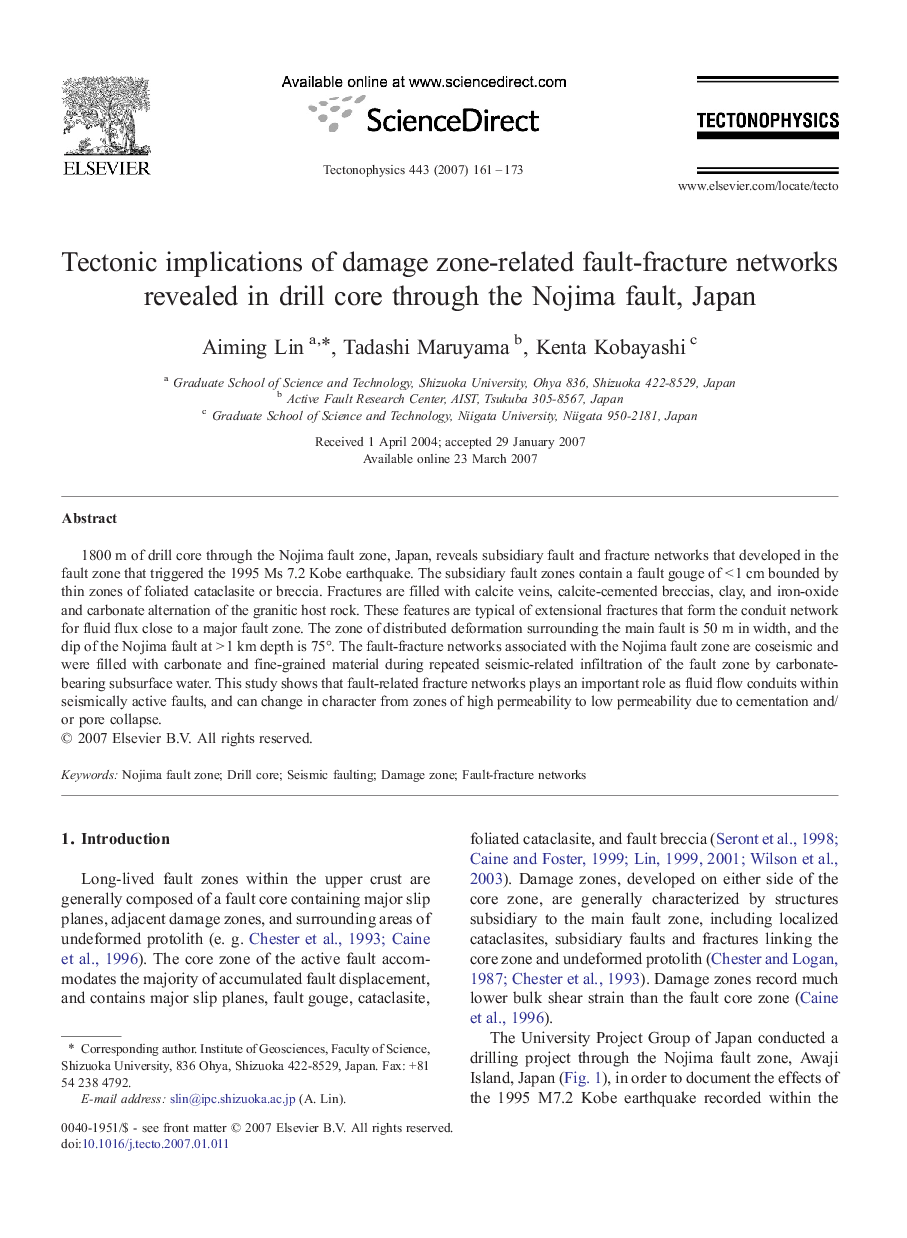| Article ID | Journal | Published Year | Pages | File Type |
|---|---|---|---|---|
| 4694785 | Tectonophysics | 2007 | 13 Pages |
1800 m of drill core through the Nojima fault zone, Japan, reveals subsidiary fault and fracture networks that developed in the fault zone that triggered the 1995 Ms 7.2 Kobe earthquake. The subsidiary fault zones contain a fault gouge of < 1 cm bounded by thin zones of foliated cataclasite or breccia. Fractures are filled with calcite veins, calcite-cemented breccias, clay, and iron-oxide and carbonate alternation of the granitic host rock. These features are typical of extensional fractures that form the conduit network for fluid flux close to a major fault zone. The zone of distributed deformation surrounding the main fault is 50 m in width, and the dip of the Nojima fault at > 1 km depth is 75°. The fault-fracture networks associated with the Nojima fault zone are coseismic and were filled with carbonate and fine-grained material during repeated seismic-related infiltration of the fault zone by carbonate-bearing subsurface water. This study shows that fault-related fracture networks plays an important role as fluid flow conduits within seismically active faults, and can change in character from zones of high permeability to low permeability due to cementation and/or pore collapse.
